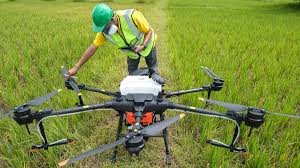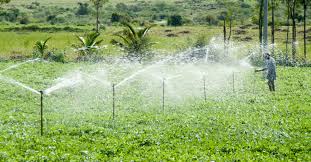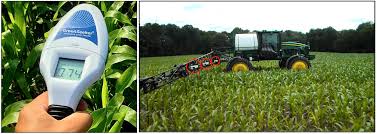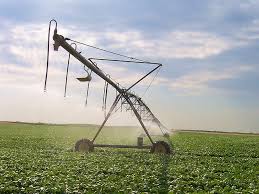Agricultural technological advancements are revolutionizing the way we produce food, manage resources, and address the challenges of a growing global population. This transformation is essential as the world is projected to reach nearly 10 billion people by 2050, intensifying the demand for sustainable and efficient farming practices.
These innovations span various fields, from precision agriculture to biotechnology, automation, and sustainability-focused practices, all aimed at increasing productivity while minimizing environmental impact.
At the core of these advancements is precision agriculture, a farming management concept that leverages technology to monitor and optimize field variability in crops.
By employing tools like GPS, drones, and sensors, farmers can gather detailed data about soil conditions, weather patterns, and crop health.
This data-driven approach allows for tailored farming practices, ensuring that resources such as water, fertilizers, and pesticides are used more efficiently.
As a result, farmers can increase yields while reducing costs and their ecological footprint, contributing to a more sustainable food system.
Another significant advancement is the rise of biotechnology in agriculture. Techniques such as genetic engineering and CRISPR gene editing have opened new avenues for developing crops that are resistant to pests, diseases, and environmental stresses.
These innovations not only help to increase food production but also enhance the nutritional quality of crops, addressing food security and health concerns in various regions.
Furthermore, biotechnology offers the potential for developing sustainable practices, such as creating crops that require fewer chemical inputs or are better suited to changing climate conditions.
The integration of automation and robotics is also transforming the agricultural landscape. With the advent of autonomous tractors, robotic harvesters, and drones, the labor-intensive nature of farming is gradually changing.
These technologies can perform repetitive tasks with precision and efficiency, reducing the need for manual labor and allowing farmers to focus on higher-level decision-making.
This shift not only increases productivity but also addresses labor shortages in many agricultural sectors, ensuring that farms can operate smoothly and effectively.
Sustainability is at the forefront of agricultural technological advancements. Innovative practices such as vertical farming, aquaponics, and regenerative agriculture aim to produce food in ways that preserve natural resources and promote biodiversity.
Vertical farming, for instance, utilizes controlled environments to grow crops in stacked layers, significantly reducing land use and water consumption.
Regenerative agriculture emphasizes soil health and ecosystem restoration, aiming to create a self-sustaining agricultural system that benefits both farmers and the environment.
As we explore the myriad innovations shaping the future of farming, it becomes clear that agricultural technological advancements hold the key to creating a resilient and sustainable food system.
These innovations are not just about increasing productivity; they are about redefining the relationship between agriculture and the environment. By embracing technology, the agricultural sector can rise to the challenges of the 21st century, ensuring food security and environmental stewardship for generations to come.
The journey ahead promises to be transformative, and the ongoing integration of technology in agriculture will play a pivotal role in determining how we produce food and manage our resources in an ever-changing world.
Precision Agriculture and Its Benefits

Precision agriculture involves the use of technology to monitor and manage field variability in crops. Here are some significant benefits:
1. Increased Crop Yields: By using precision agriculture techniques, farmers can optimize the use of resources, leading to improved crop yields. The ability to tailor inputs to specific field areas ensures that crops receive exactly what they need for optimal growth.
2. Efficient Resource Management: Precision agriculture helps in the efficient use of water, fertilizers, and pesticides. By applying inputs only where necessary, farmers can reduce waste and lower their production costs.
3. Environmental Sustainability: With precision agriculture, farmers can minimize their environmental footprint. Efficient resource use leads to less runoff of chemicals into waterways and reduced greenhouse gas emissions.
4. Data-Driven Decision Making: Precision agriculture relies on data collection and analysis, enabling farmers to make informed decisions. This data-driven approach helps identify trends, manage risks, and improve overall farm management.
5. Enhanced Profitability: By improving crop yields and reducing input costs, precision agriculture can lead to increased profitability for farmers. The investment in technology often pays off through higher returns on investment.
Role of Artificial Intelligence in Farming
Artificial intelligence (AI) is transforming farming practices by providing tools for data analysis and decision support. Here’s how AI plays a role in precision agriculture:
1. Predictive Analytics: AI algorithms can analyze historical data to predict crop yields, pest infestations, and disease outbreaks. This predictive capability allows farmers to take proactive measures to mitigate risks.
2. Crop Monitoring: AI-powered tools can continuously monitor crop health through satellite imagery and sensors. This real-time data helps farmers identify issues early and take corrective action.
3. Automated Systems: AI can automate various farming tasks, such as planting, irrigation, and harvesting. Automated systems improve efficiency and reduce the need for manual labor.
4. Customized Recommendations: AI can analyze data from multiple sources to provide tailored recommendations for fertilizer application, irrigation scheduling, and pest control strategies.
5. Precision Livestock Farming: AI technology is also applied in livestock management, where it can monitor animal health, feeding patterns, and reproductive cycles to enhance productivity.
Drone Technology in Modern Agriculture
Drones are becoming essential tools in modern agriculture, providing valuable data and insights. Here are some ways drones are utilized:
1. Crop Surveillance: Drones equipped with cameras and sensors can survey large areas quickly, capturing detailed images of crops. This aerial view helps farmers assess crop health and identify problem areas.
2. Precision Spraying: Drones can be used for targeted application of pesticides and fertilizers. This precision reduces chemical use and minimizes environmental impact.
3. Soil Analysis: Drones can collect data on soil conditions, including moisture levels and nutrient content. This information helps farmers make informed decisions about soil management.
4. Mapping and Modeling: Drones can create high-resolution maps of fields, allowing farmers to analyze spatial variability. These maps assist in planning planting and harvesting schedules.
5. Disaster Assessment: After extreme weather events, drones can quickly assess damage to crops and fields. This rapid response capability aids in recovery planning.
Read Also: Why Eggs Are Good For You – The Exceptional Super Food for Your Health
Advancements in Irrigation Systems

Irrigation systems are crucial for efficient water management in agriculture. Recent advancements are making these systems smarter and more effective:
1. Smart Irrigation Technology: Sensors and controllers allow farmers to monitor soil moisture levels and automatically adjust irrigation schedules. This technology ensures that crops receive the right amount of water at the right time.
2. Drip Irrigation: Drip irrigation systems deliver water directly to the plant roots, minimizing water wastage. This method is especially beneficial in arid regions where water conservation is critical.
3. Rainwater Harvesting: Advanced systems for capturing and storing rainwater can provide an additional water source for irrigation. This practice helps farmers reduce reliance on groundwater.
4. Integration with Precision Agriculture: Modern irrigation systems can integrate with precision agriculture technologies, allowing for data-driven irrigation decisions. This integration optimizes water use and enhances crop health.
5. Remote Monitoring: Remote monitoring systems enable farmers to track irrigation performance from anywhere. This capability helps in managing irrigation schedules efficiently, especially during peak seasons.
Soil Health Monitoring Technologies
Soil health is crucial for sustainable agriculture and crop productivity. Monitoring soil conditions helps farmers make informed decisions about land management. Here are key soil health monitoring technologies:
1. Soil Sensors: Soil sensors measure moisture levels, pH, temperature, and nutrient content. These sensors provide real-time data, helping farmers understand soil conditions and optimize irrigation and fertilization practices.
2. Remote Sensing: Remote sensing technology uses satellites or drones to gather data on soil health across large areas. This information helps farmers identify problem zones and assess overall soil quality.
3. Soil Health Test Kits: Portable soil test kits allow farmers to analyze soil samples quickly. These kits provide insights into nutrient levels and recommend necessary amendments to improve soil health.
4. Geographic Information Systems (GIS): GIS technology maps soil characteristics and variability within a field. This mapping enables precision farming practices, allowing farmers to apply inputs based on specific soil conditions.
5. Data Analytics Platforms: Data analytics platforms collect and analyze soil data to generate insights. These platforms help farmers make data-driven decisions about soil management, improving crop health and yields.
Robotics in Agricultural Operations
Robotics is transforming agricultural operations by automating tasks and increasing efficiency. Here are some significant applications of robotics in agriculture:
1. Automated Harvesting: Harvesting robots can efficiently pick fruits and vegetables. These machines reduce labor costs and ensure timely harvesting, which is critical for crop quality.
2. Planting Robots: Robotics technology allows for precise planting of seeds at optimal depths and spacing. This precision enhances crop establishment and reduces seed wastage.
3. Weeding Robots: Weeding robots use advanced vision systems to identify and remove weeds without harming crops. This technology reduces the need for herbicides, promoting sustainable farming practices.
4. Livestock Monitoring Robots: Robots equipped with sensors can monitor livestock health and behavior. These systems help farmers manage herds more effectively, improving animal welfare and productivity.
5. Drones for Crop Management: While not traditional robots, drones are often categorized with agricultural robotics. They can monitor crop health, assess soil conditions, and deliver inputs, enhancing overall farm management.
Read Also: Trichomoniasis: Description, Damages Caused, Control and Preventive Measures
Use of Sensors in Crop Management

Sensors play a vital role in modern crop management, providing real-time data to optimize farming practices. Here are the main uses of sensors in agriculture:
1. Environmental Sensors: These sensors measure temperature, humidity, light, and soil moisture levels. This data helps farmers monitor environmental conditions and adjust their practices accordingly.
2. Crop Health Sensors: Sensors equipped with multispectral or hyperspectral imaging can detect plant stress and nutrient deficiencies early. Early detection allows farmers to take action before significant damage occurs.
3. Irrigation Sensors: Soil moisture sensors help farmers manage irrigation efficiently by indicating when crops need water. This technology reduces water waste and promotes healthy crop growth.
4. Pest Monitoring Sensors: Sensors can detect pest populations and monitor their activity. This information allows for timely interventions, reducing the reliance on chemical pesticides.
5. Yield Monitoring Sensors: Yield monitors on harvesting equipment track crop yields in real time. This data helps farmers understand field variability and make informed decisions for future planting.
Biotechnology and Genetic Engineering in Agriculture
Biotechnology and genetic engineering have revolutionized crop production and agricultural practices. Here’s how they contribute to modern agriculture:
1. Genetically Modified Organisms (GMOs): GMOs are crops that have been genetically modified to express desired traits, such as pest resistance or drought tolerance. This technology helps improve yields and reduce the need for chemical inputs.
2. Marker-Assisted Selection: This technique uses molecular markers to identify desirable traits in crops. Marker-assisted selection speeds up the breeding process, allowing for the development of improved varieties more quickly.
3. Tissue Culture: Tissue culture techniques enable the propagation of plants under sterile conditions. This method helps produce disease-free plants and can accelerate the breeding of new varieties.
4. Gene Editing Technologies: Technologies like CRISPR allow for precise editing of plant genomes. This precision enables the development of crops with specific traits, such as improved nutritional content or resistance to environmental stresses.
5. Biopesticides and Biofertilizers: Biotechnology has led to the development of biopesticides and biofertilizers that are environmentally friendly alternatives to chemical inputs. These products enhance soil health and reduce the environmental impact of agriculture.
Sustainable Farming with Renewable Energy
Sustainable farming practices leverage renewable energy sources to reduce reliance on fossil fuels and minimize greenhouse gas emissions. Here are key aspects of integrating renewable energy into agriculture:
1. Solar Energy: Farmers can install solar panels on their land or rooftops to harness sunlight for electricity. This energy can power irrigation systems, greenhouses, and equipment, reducing electricity costs and promoting energy independence.
2. Wind Energy: Wind turbines can be installed on farms to generate clean energy. This renewable source can power farm operations or even be sold back to the grid, providing additional income.
3. Biomass Energy: Farmers can utilize agricultural waste, such as crop residues and livestock manure, to produce biogas through anaerobic digestion. This process generates renewable energy while also managing waste.
4. Geothermal Energy: In certain areas, geothermal energy can be used for heating greenhouses or aquaculture systems. This sustainable energy source maintains optimal temperatures for plant and animal growth.
5. Hydroponic Systems: Using renewable energy to power hydroponic systems allows for year-round crop production without traditional soil farming. This practice can be integrated into urban environments, reducing the carbon footprint of food production.
Vertical Farming and Indoor Agriculture
Vertical farming and indoor agriculture are innovative approaches that utilize limited space efficiently and minimize resource use. Here are the key features:
1. Space Optimization: Vertical farming involves stacking layers of crops in a controlled environment. This approach maximizes space, allowing for food production in urban areas where land is scarce.
2. Resource Efficiency: Indoor agriculture systems often use hydroponics or aeroponics, which use significantly less water than traditional soil-based farming. These methods also eliminate the need for pesticides, promoting healthier food production.
3. Year-Round Production: Controlled environments allow crops to grow regardless of external weather conditions. This capability ensures a consistent food supply throughout the year.
4. Reduced Transportation Emissions: Growing food closer to urban consumers minimizes transportation distances, leading to lower carbon emissions and fresher produce.
5. Technology Integration: Vertical farms often incorporate advanced technologies, such as LED lighting and climate control systems, to optimize growth conditions. These innovations enhance crop yields and quality.
Smart Greenhouses and Controlled Environment Agriculture
Smart greenhouses combine traditional farming techniques with cutting-edge technology to create optimal growing conditions. Here’s how they contribute to sustainable agriculture:
1. Climate Control Systems: Smart greenhouses use sensors and automation to monitor and control temperature, humidity, and light levels. This precise control enhances crop growth and reduces resource waste.
2. Integrated Pest Management: Advanced technologies enable smart greenhouses to detect pests early and implement targeted pest control measures, reducing the need for chemical pesticides.
3. Water Efficiency: These systems often employ drip irrigation and rainwater harvesting, minimizing water usage while ensuring plants receive adequate moisture.
4. Data Analytics: Smart greenhouses collect data on plant growth and environmental conditions. Analyzing this data allows farmers to make informed decisions, improving crop health and productivity.
5. Energy Efficiency: Utilizing renewable energy sources and energy-efficient technologies, such as solar panels and heat recovery systems, minimizes the carbon footprint of greenhouse operations.
Blockchain Technology for Supply Chain Transparency
Blockchain technology is transforming the agricultural supply chain by enhancing transparency and traceability. Here are its key benefits:
1. Traceability: Blockchain allows for tracking the journey of agricultural products from farm to table. This transparency ensures consumers know the origin of their food and promotes trust in food safety.
2. Reduced Fraud: With a secure and immutable record of transactions, blockchain helps prevent fraud in the supply chain, ensuring that consumers receive genuine products.
3. Improved Efficiency: By streamlining processes and reducing paperwork, blockchain technology enhances supply chain efficiency. This efficiency can lead to cost savings for farmers and consumers alike.
4. Empowering Farmers: Blockchain enables farmers to connect directly with consumers, eliminating intermediaries and ensuring they receive fair prices for their products.
5. Sustainability Tracking: Blockchain can help track sustainability practices in the supply chain, allowing consumers to make informed choices about environmentally friendly products.
Autonomous Machinery in Agriculture
Autonomous machinery is revolutionizing the agricultural landscape by increasing efficiency and reducing labor costs. Here are some examples of how this technology is transforming farming:
1. Autonomous Tractors: These tractors can operate without a driver, utilizing GPS and sensors to navigate fields. They enhance efficiency by performing tasks like planting, tilling, and harvesting.
2. Drones for Crop Monitoring: Drones equipped with cameras and sensors can monitor crop health and assess field conditions. This aerial data provides valuable insights, allowing farmers to make data-driven decisions.
3. Robotic Harvesters: Robots designed for harvesting can work around the clock, picking fruits and vegetables with precision. This automation reduces labor costs and ensures timely harvesting.
4. Automated Irrigation Systems: These systems can be programmed to irrigate fields based on soil moisture levels and weather conditions, optimizing water use and promoting sustainable practices.
5. Precision Application of Inputs: Autonomous machinery can apply fertilizers, pesticides, and herbicides precisely where needed, minimizing waste and reducing the environmental impact of farming.
Do you have any questions, suggestions, or contributions? If so, please feel free to use the comment box below to share your thoughts. We also encourage you to kindly share this information with others who might benefit from it. Since we can’t reach everyone at once, we truly appreciate your help in spreading the word. Thank you so much for your support and for sharing!
Read Also: The Ultimate Guide to Unlocking the Potential of Garbage Wastes
Frequently Asked Questions
We will update this section soon.

